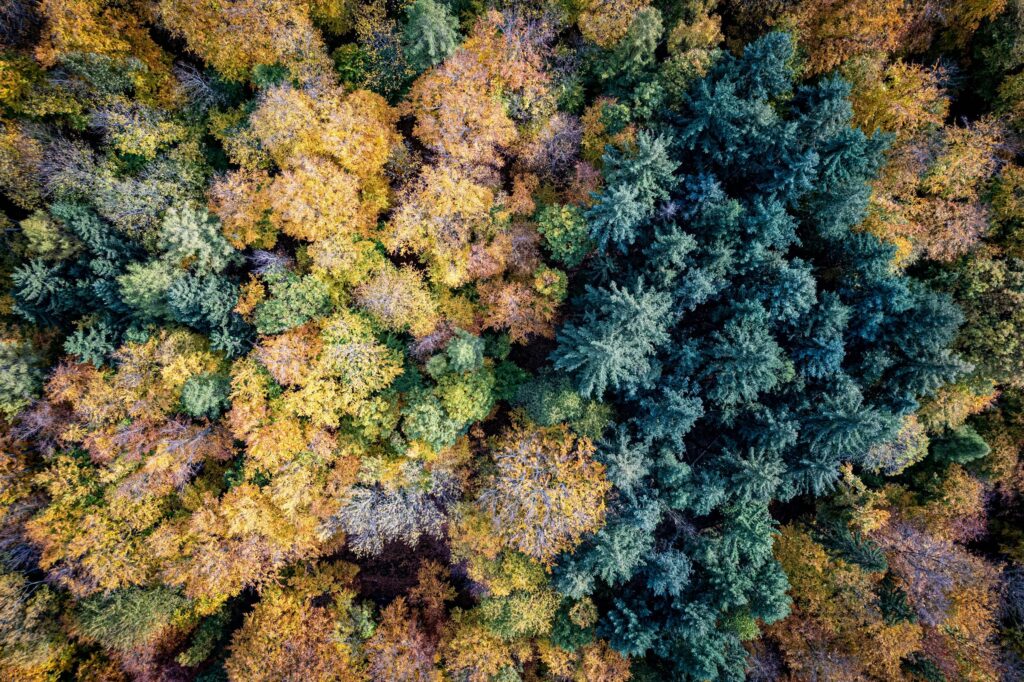RESDiNET and Czech University of Life Sciences Prague publish third paper on spruce forest health
August 1, 2024, Prague, Czechia – RESDiNET team, in collaboration with researchers from the Czech University of Life Sciences Prague, have unveiled new findings on the natural defences of mixed forests against bark beetle infestations. Led by Dr. Giorgi Kozhoridze, the latest study published in Forest Ecology and Management highlights how mixed forest cover can directly reduce beetle infestation rates in the Šumava National Park and Bayerischer Wald National Park.
Key findings:
- Negative impact of mixed forests on beetle infestation: The study reveals that mixed forests have a direct negative effect on the infestation rates of Norway spruce by the European bark beetle, Ips typographus. This protective effect is mediated by environmental factors such as elevation and temperature.
- Environmental predictors of infestation: Elevation and temperature are identified as primary drivers of infestation patterns. Lower elevations and higher temperatures increase the susceptibility of forests to bark beetle attacks.
- Scale-dependent relationships: The study finds that the relationships between beetle infestation and environmental predictors are scale-dependent, with mixed forest cover offering significant protection across various spatial scales.
Interestingly, the study explored the direct effect of mixed forest cover on infestation, as indicated by the “diversity–resistance” hypothesis, and the indirect effects of mixed forest cover on infestation projected through related environmental conditions. It also investigated the effectiveness of various spatial grids (SGs) for studying spruce infestation by Ips typographus in central Europe, a question not previously addressed in bark beetle outbreak studies.
This paper is the third in a series of studies investigating bark beetle outbreaks in the same study area. The first two studies by Kozhoridze et al. (2023) and Korolyova et al. (2022) also used remote sensing methods to explore the impacts of canopy surface temperature and climate factors on spruce susceptibility and survival.
- Kozhoridze et al. (2023): found that increased canopy surface temperature in the year prior to infestation heightens the susceptibility of Norway spruce to bark beetle attacks. This study emphasized the role of water scarcity and drought stress in reducing tree defence mechanisms.
- Korolyova et al. (2022): Demonstrated that spruce survival during severe outbreaks is a non-random non-linear process influenced by chronic drought stress, tree size, stand density prior to the outbreak and crown depth. Larger trees were found to be more vulnerable, but those with deeper crowns had enhanced survival potential.
Practical implications: the insights from these studies underscore the importance of promoting mixed forest compositions as a sustainable forest management strategy. By increasing the diversity of tree species, forest managers can enhance the resilience of forests to pest outbreaks and climate-induced stressors.
For more details, please check out the full texts of the papers:
- Kozhoridze et al. (2024) Direct and mediated impacts of mixed forests on Norway spruce infestation by European bark beetle Ips typographus
- Kozhoridze et al. (2023) Norway spruce susceptibility to bark beetles is associated with increased canopy surface temperature in a year prior disturbance
- Korolyova et al. (2022) The last trees standing: Climate modulates tree survival factors during a prolonged bark beetle outbreak in Europe
RESDiNET is an international research project funded by the European Research Executive Agency, Horizon Europe. The project builds on networking for excellence through knowledge transfer and exchange of best practices, establishing an initial network and developing new joint research projects in novel remote sensing technology applications.
RESDiNET conducts rigorous analyses of severe insect-induced disturbances in test areas representing different forest and climate types, such as mountain forests in Slovakia and boreal forests in Finland and Sweden. The project integrates in situ UAV and drone-acquired remotely sensed data, existing multitemporal geospatial information, and field data. The combined datasets are used to develop new tools for landscape-level early bark beetle attack identification and for designing bark beetle infestation risk assessment models, drawing on the latest advances in drone technologies and image analytical tools, including deep convolutional neural networks and artificial intelligence algorithms.
Stay connected: For more scientific updates and news, follow RESDiNET on social media:
- Instagram: @resdinet
- Facebook: www.facebook.com/resdinet
- YouTube: @resdinet
- X: DE_Research_
Visit our website and subscribe to our newsletter for regular updates on our research and projects.

